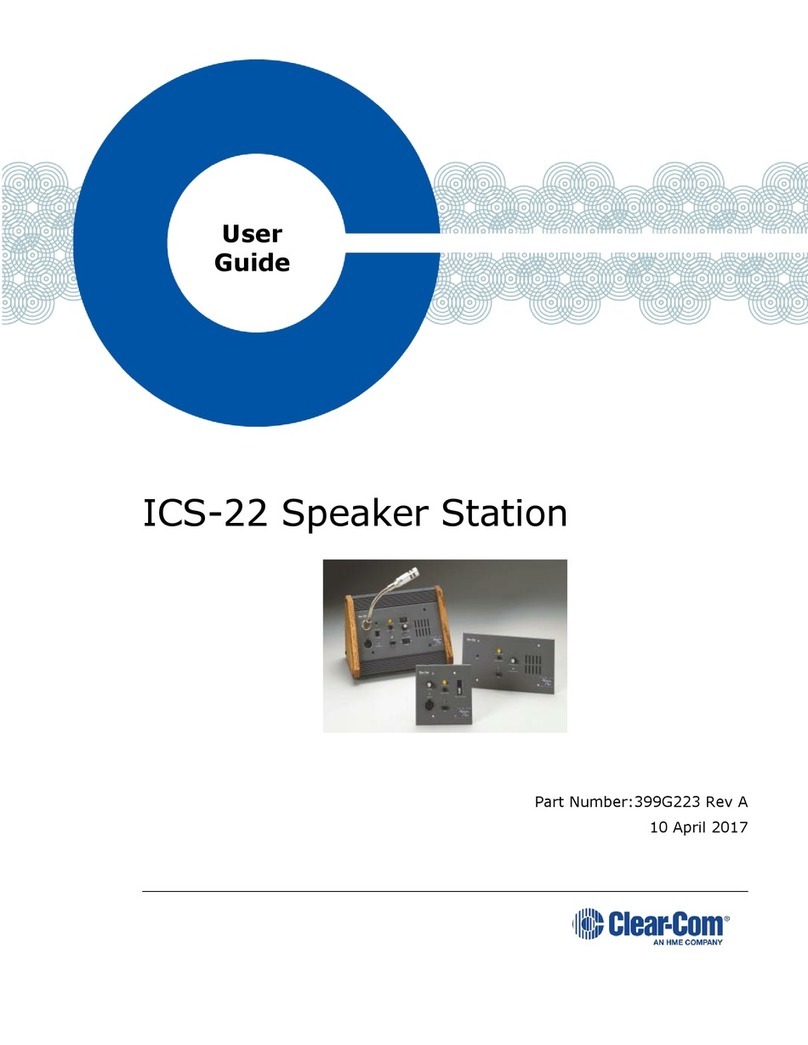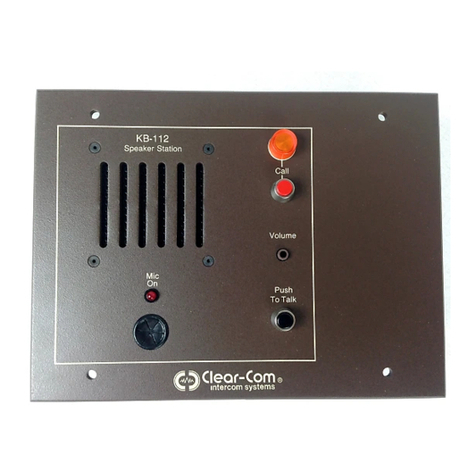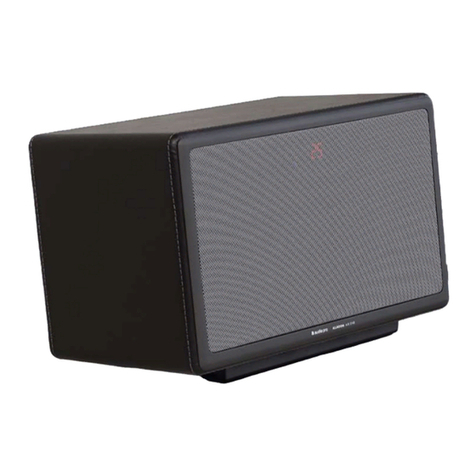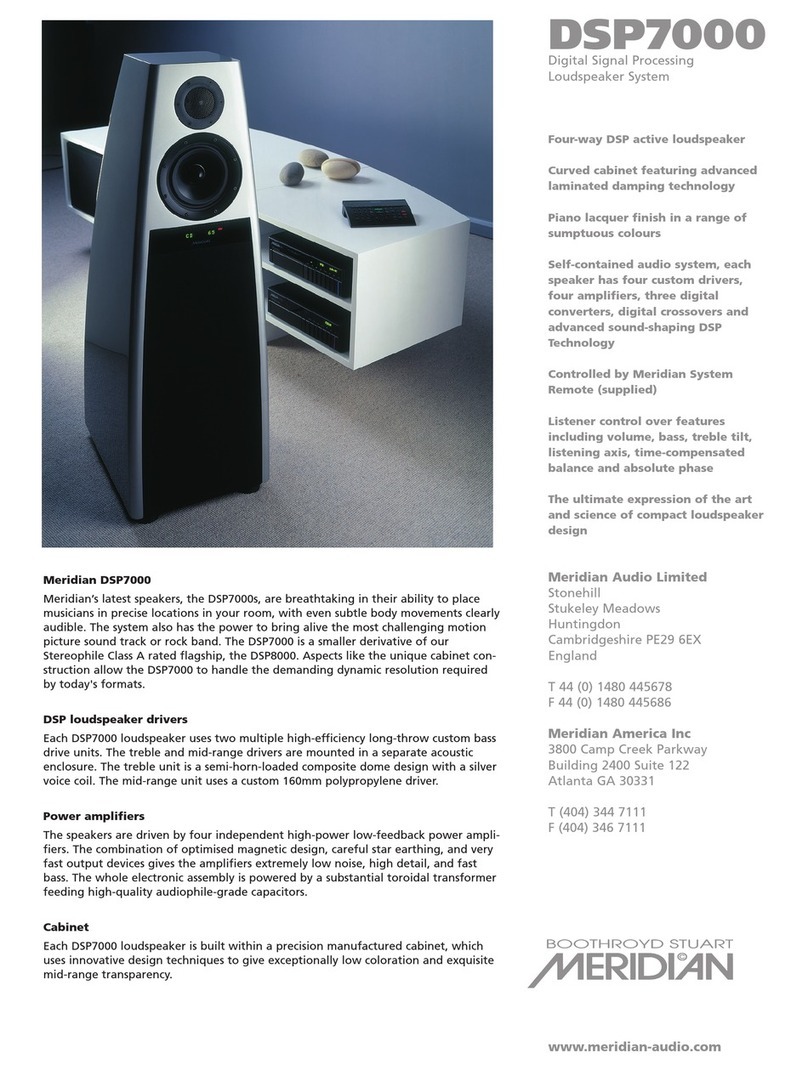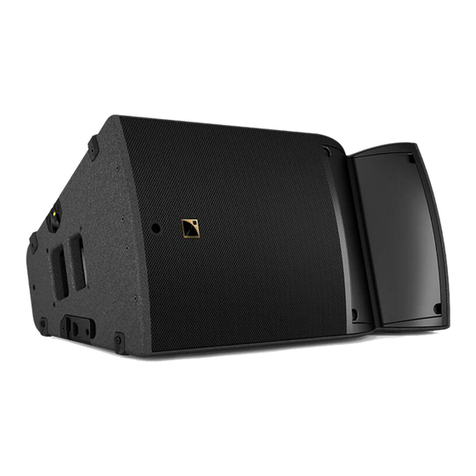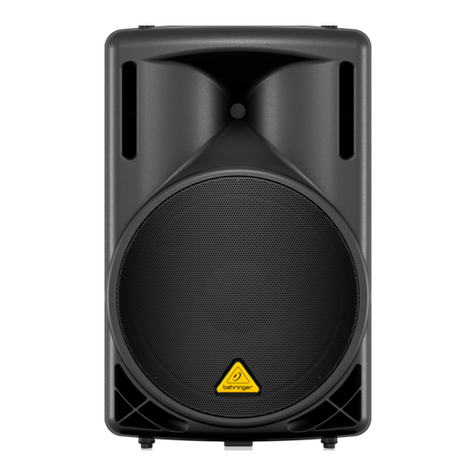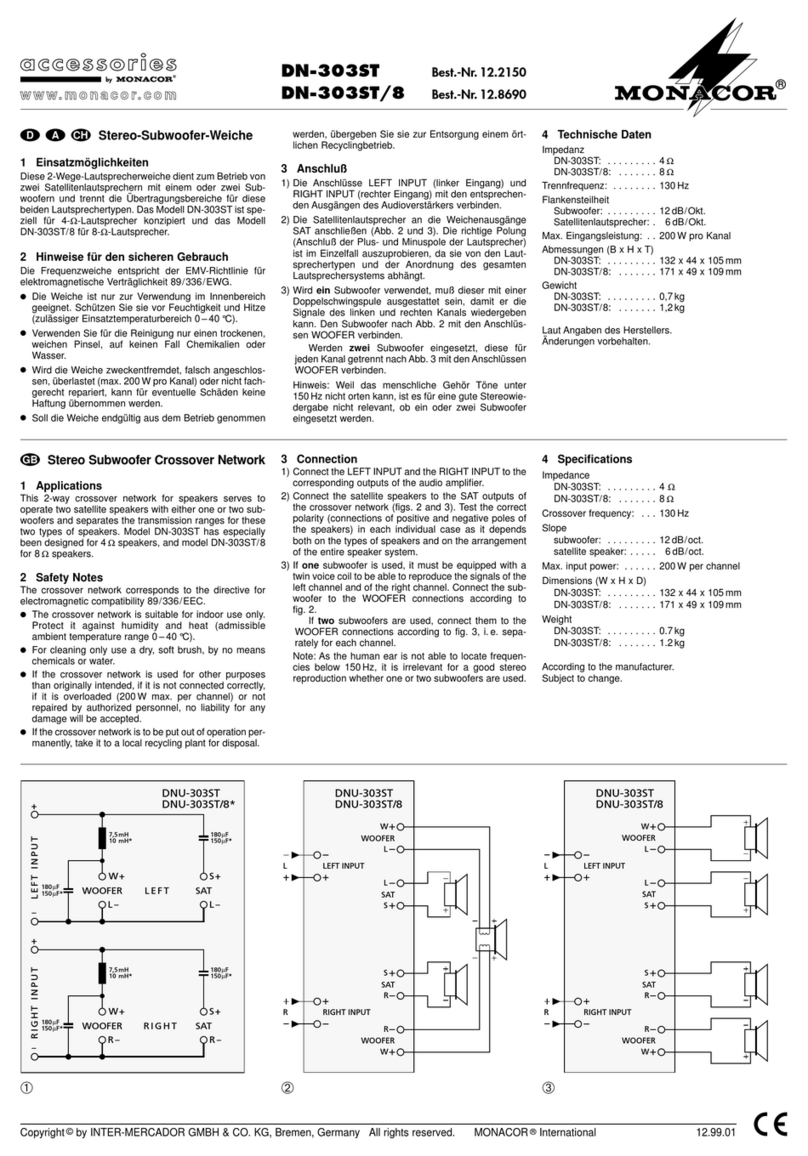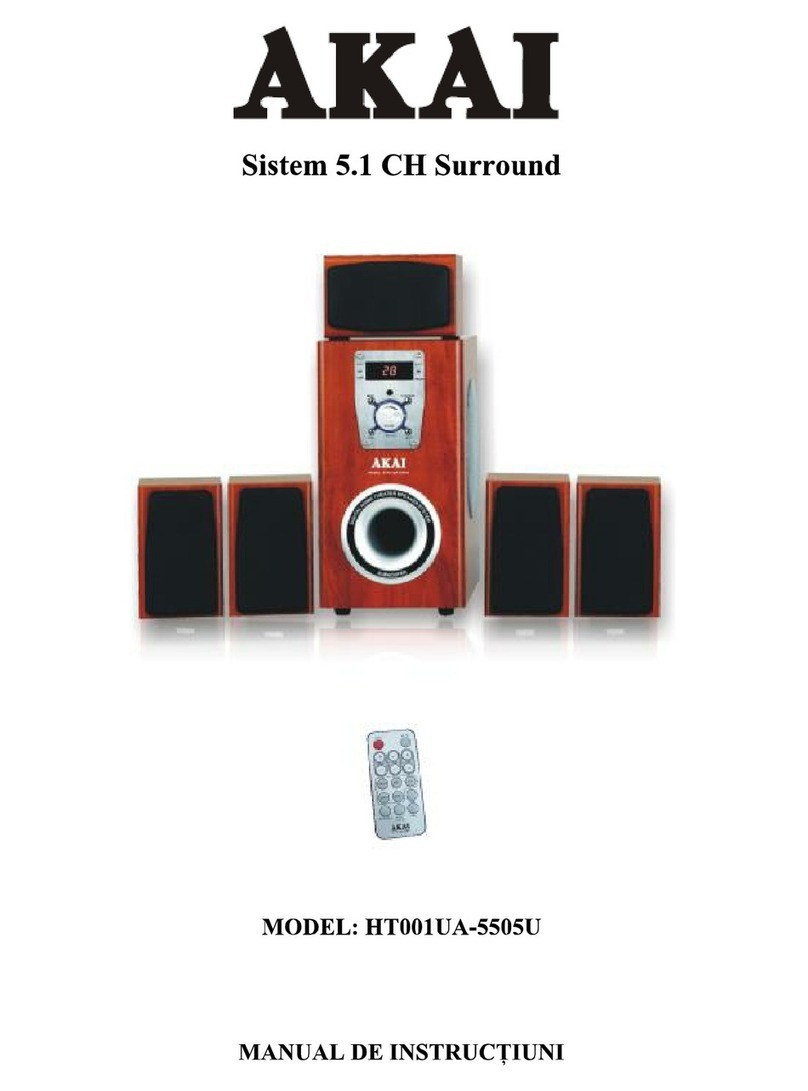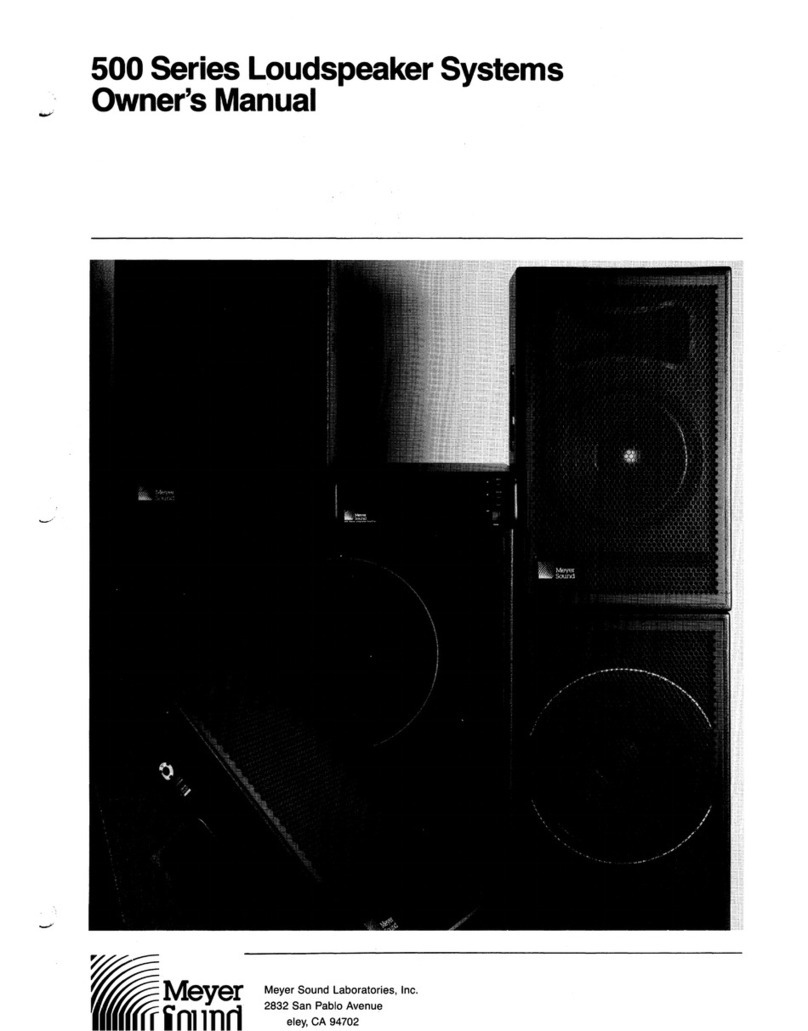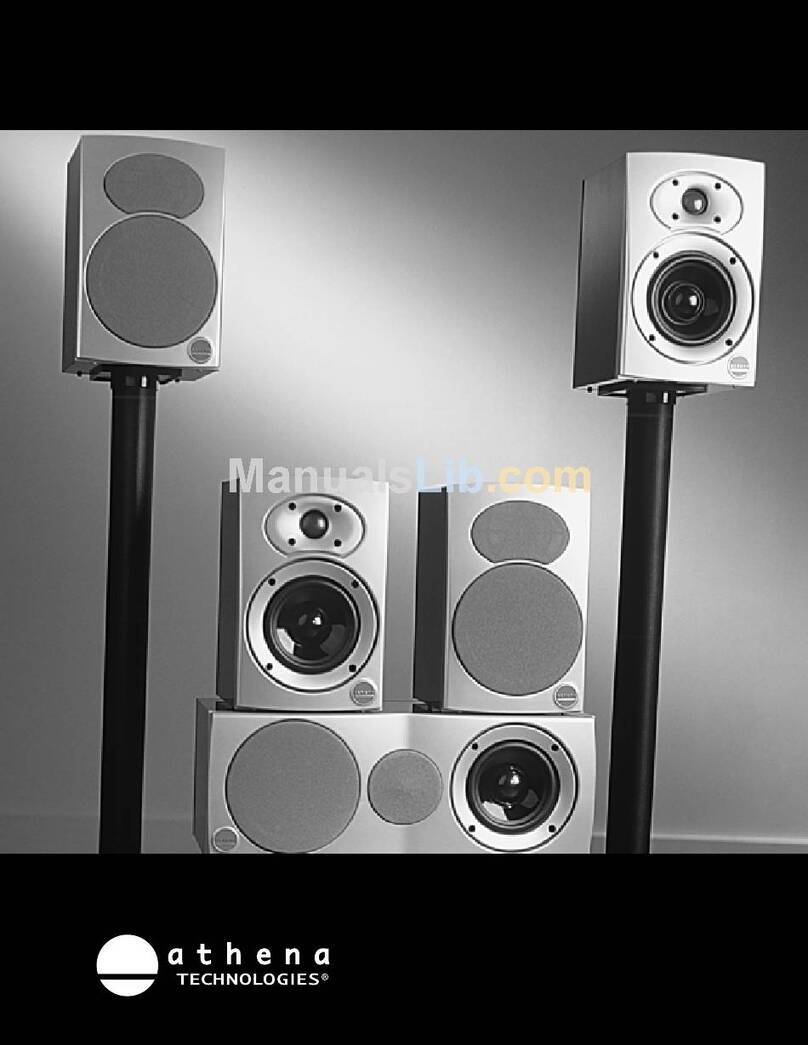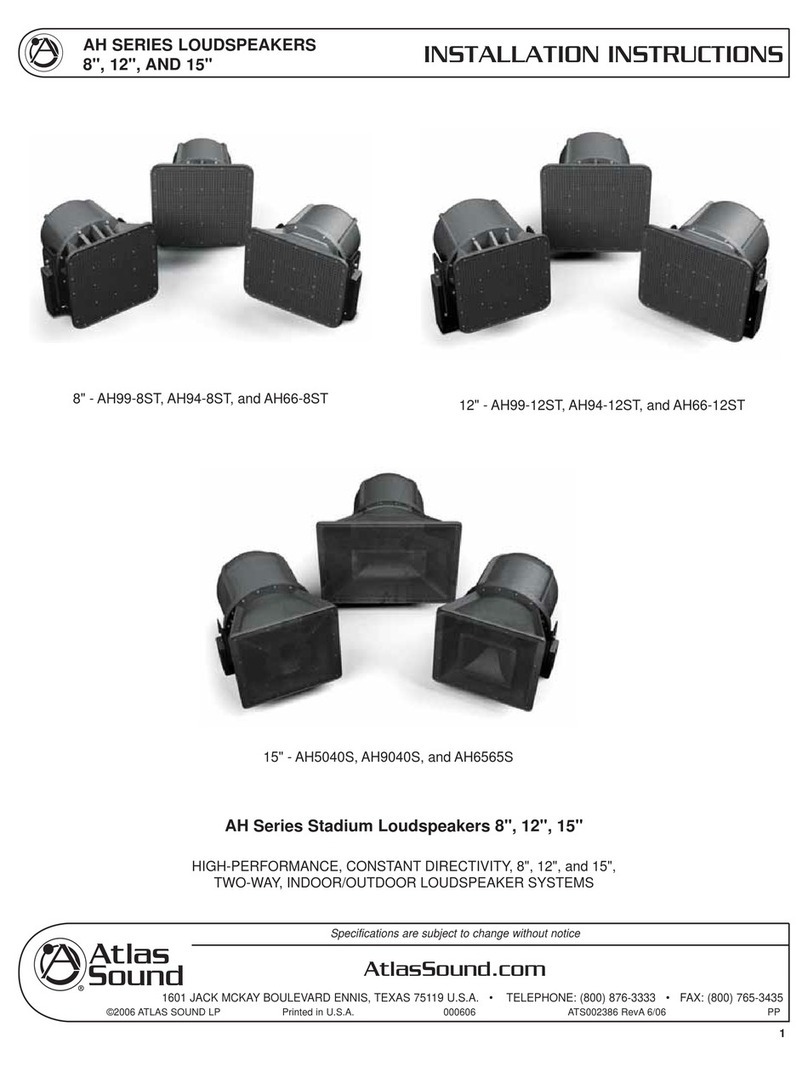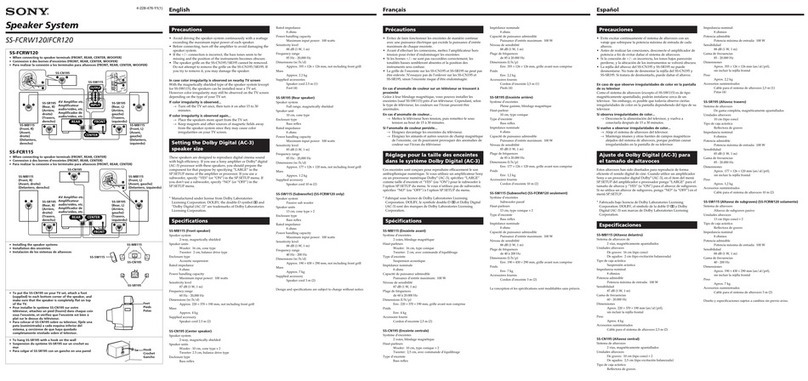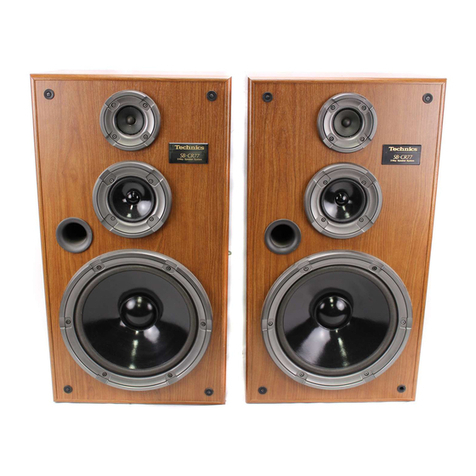Clear-Com KB-211 User manual

KB-211/KB-211GM
TWO-CHANNEL SPEAKER STATIONS
USER MANUAL


Clear-Com Intercom Systems KB-211/KB-211GM Two-Channel Speaker Stations
© Clear-Com Intercom Systems 1999 1Rev. A
Introduction
Congratulations and thank you for choosing this Clear-Com product.
The KB-211 and KB-211GM Two-Channel Speaker Stations are powerful,
user-friendly units that can serve as versatile intercom stations.
Please read this manual completely to better understand the functions of
these products. For questions not addressed in this manual, contact the
dealer or Clear-Com directly. Clear-Com applications support and service
people are ready to help.
Description
The Clear-Com PL-Pro™KB-211 is a two-channel speaker station designed
for use in theatres, live performances, industrial environments, and small
television facilities. It features speech intelligibility, even in high noise levels,
and can be customized through its programmable options.
In addition, the Clear-Com PL-Pro™KB-211GM also contains a jack for an
optional Clear-Com gooseneck panel microphone and a close-in, voice-
operated circuit (VOX). This circuit allows automatic, alternate dipping of the
panel microphone and the speaker in response to conversation.
Selectable, two-channel talking and/or listening allows the operator to
communicate on either of the intercom channels. The dual-action talk button
operates in electronic momentary or latching mode. Monitoring can be done
through the headset, the integral speaker, or both simultaneously. The KB-211
offers both visual and audible call signaling to attract the attention of
operators. The Remote Mic Kill (RMK) feature on main stations will turn off
any open microphones on the KB-211.
A balanced program input allows the monitoring of external audio using the
headset or speaker. This program input can also be used as a paging
function.
The KB-211 speaker station accepts dynamic headsets, such as the Clear-
Com PL-Pro™Series HS-6 Telephone Handset or PT-4 Push-to-Talk Hand
Microphone. A sidetone control allows the operator to vary the level of his
voice heard through the headset and speaker.
The integral speaker can be turned on or off by a convenient front-panel
switch. An automatic speaker dipping circuit will lower the level of the speaker
whenever the talk button is activated. The KB-211GM’s close-in VOX dips the
speaker or gooseneck microphone automatically as the station is used. These
features help minimize acoustical feedback.
The KB-211 receives 30-VDC power from the Clear-Com intercom line. The
unit mounts either in a standard four-gang electrical outlet box or in an
optional Clear-Com V-Box. The extra-thick front panel and compact, surface-
mount circuitry results in a reduced size and lighter weight package that
maintains Clear-Com ruggedness. The two intercom channels connect to a

KB-211/KB-211GM Two-Channel Speaker Stations Clear-Com Intercom Systems
Rev. A 2© Clear-Com Intercom Systems 1999
plug-on screw terminal strip. Male and female three-pin XLR connectors are
provided on the V-Box for an in-line connection to one of the intercom
channels.
The optional EB-TW daughter board module can be installed to provide an
interface to two intercom channels on a single microphone cable. Also, the
EB-4W 4-Wire daughter board module is available to allow long-distance
connections using separate pairs of wires for send audio and receive audio.
The EB-4W 4-Wire option supports two-channel operation.
The KB-211 and KB-211GM are compatible with all Clear-Com Party-Line
intercoms.
Quick Start
1. Unpack the unit and inspect it for any damage that may have
occurred during shipping.
2. Set the Option switches to the default (up) position.
3. Connect the intercom lines. If only one intercom line is to be
connected, set Option Switch 1 to the ON or CLOSED position.
4. Install the KB-211 into the four-gang outlet box or V-Box. (For
additional information, refer to the Clear-Com PL-Pro™System
Installation Manual.)
5. Set Listen Levels and Sidetones. (Refer to“5—Sidetone Control”
on page 4.)
6. The speaker station should now be operating properly.
7. Read the rest of this manual for further information.
Operation
Normal operation of the KB-211 Speaker Station only requires the front-panel
controls. The controls located elsewhere on the unit are intended to be set-
and-forget in nature. For intercom operation, set the Listen level control to the
desired level and press the Talk button when talking. If a headset or handset
is used, set the Sidetone control for each channel for the desired amount of
sidetone in the earphone. If the PT-4 hand-held, push-to-talk microphone is
used, or if the panel microphone is used on the KB-211GM, set the sidetone
controls for minimum feed-through to the speaker to prevent acoustic
feedback.
Front Panel
The controls, indicators, and connectors on the KB-211 and KB-211GM front
panels are shown on Figure 1 on page 3 and are described by the following
text.

Clear-Com Intercom Systems KB-211/KB-211GM Two-Channel Speaker Stations
© Clear-Com Intercom Systems 1999 3Rev. A
FIGURE 1: Front Panel
1—Talk Button and Lamp
The Talk button activates the microphone feed to the selected intercom
channel. The Talk button has a dual action (momentary or latching) depending
upon how the button is pressed. If desired, the latching function can be
defeated using an internal switch. The following describes the various
functions of this button.
• Momentary—Press and hold the Talk button while speaking. Release it
when finished.
• Latching—Press and release the button quickly to latch the Talk
function. Press and release the button again to turn off the Talk
function.
• Talk Indication—The associated Talk lamp will illuminate green when
the Talk function is activated.
• VOX indication—On the KB-211GM, when the VOX feature is enabled,
the Talk lamp will illuminate green when the Talk function is activated,
but will turn red when the panel microphone is in use. This
automatically dips the speaker volume.
Speaker
pro
KB-211GM
S p e a k e r
S t a t i o n
PL
Off On
Intercom Level
Channel Select
BA
Call
Talk
Sidetone
Program Level
2
1
34
5 67
9
10
VOX
Headset
Panel Mic
1211 8

KB-211/KB-211GM Two-Channel Speaker Stations Clear-Com Intercom Systems
Rev. A 4© Clear-Com Intercom Systems 1999
• Speaker Dip—If the front-panel speaker is turned on and the VOX
feature is not used, pressing the Talk button will reduce the speaker
output level to avoid feedback.
2—Call Button and Lamp
Pressing the Call button will send a call signal on the selected channel. All the
call lights on that channel will then flash. Call signals can also be sent while
talking if required. The Call lamp will light while the Call button is pressed, or
whenever a call signal is present on the selected channel. An internal option
jumper can be set to allow the Call lamp to light when a call signal is present
on either channel.
3—Tone Alert
An audible tone alert can sound when a call signal is received on the selected
channel or either channel. This can be useful when the operator’s attention
has been drawn away from the KB-211 indicator panel. The audible tone alert
level can be adjusted or turned off by an internal control. The Tone Alert will
not sound if a call signal is originated at the KB-211 station or if the Speaker
ON/OFF Switch is turned off. The Tone Alert plays through both the speaker
and headset if the Speaker ON/OFF Switch is turned on.
4—Intercom Level Control
Turn this control to set the listen level required on the speaker or headset.
This control does not affect the Tone Alert level or the Program Input level.
5—Sidetone Control
Sidetone is the level of the operator’s voice that is heard while talking on the
intercom. Setting a comfortable level of sidetone will ensure that the intercom
line sounds alive and also helps modulate the operator’s voice relative to
other voices on the line.
Typically, different Sidetone settings are needed depending upon whether the
speaker is used. Use one of the following procedures to correctly set the
Sidetone level control.
Sidetone Adjustment Procedure for Headset
Follow these steps to adjust a headset’s sidetone level.
1. Set the Intercom Level control to a comfortable level by having
someone talk to the operator from another station.
2. Press the Talk button and speak into the microphone while
turning the Sidetone control slowly back and forth until the voice
reaches a comfortable level in the headset.
Follow these steps to adjust the sidetone for gooseneck microphones on the
KB-211GM or PT-4 hand-held, push-to-talk microphone with the Speaker
turned on.

Clear-Com Intercom Systems KB-211/KB-211GM Two-Channel Speaker Stations
© Clear-Com Intercom Systems 1999 5Rev. A
1. Set the VOX control fully counterclockwise to disable this feature.
(KB-211GM only)
2. Set the Intercom Level control to a comfortable level.
3. Press the Talk button and speak into the microphone while
turning the Sidetone control slowly back and forth. There should
be a point where the operator’s voice (and any accompanying
acoustic feedback) disappears. This is the null point.
4. Readjust the VOX control. (Refer to “12—VOX Control (KB-
211GM only)” on page 6.)
6—Program Level Control
Adjust the Program Level control to set the program audio level heard in the
headset or panel speaker.
Note: Forcing the trimpots past their stop points will damage them.
7—Speaker ON/OFF Switch
The Speaker ON/OFF Switch turns the front-panel speaker on or off. This
switch also controls whether the Tone Alert is heard through the speaker. The
speaker volume will automatically dip when the talk function is set, unless the
VOX function is enabled.
8—Mic Select Switch (KB-211GM only)
The Mic Select switch selects whether the panel microphone or the headset
microphone is active. When the VOX feature is enabled, it is only operational
when the panel microphone is active.
9—Channel Switch
This switch selects the intercom channel (A or B) on which the speaker station
is active.
10—Headset Connector
The headset connector is located on the front panel. All Clear-Com headsets
are recommended for use with the KB-211. The Clear-Com PT-4 Push-to-Talk
Microphone or the HS-6 Telephone Handset will also plug into the headset
connector. The following is a description of the characteristics of a suitable
headset:
• Mic Type—Dynamic; 150 to 400 ohms impedance; -55 dB output level
• Headphone—Dynamic; 50 to 2000 ohms impedance.
The wiring of the headset is to be as follows:
• Pin 1—microphone ground (shield)
• Pin 2—microphone hot
• Pin 3—headphone ground

KB-211/KB-211GM Two-Channel Speaker Stations Clear-Com Intercom Systems
Rev. A 6© Clear-Com Intercom Systems 1999
• Pin 4—headphone hot.
The microphone and headphone wiring in the headset cord must be
individually shielded.
Note: Do not connect Pins 1 and 3 together. Headset extension cords or
headset ”Y” cables are not recommended because they may increase
crosstalk between channels.
11—Panel Mic Connector (KB-211GM only)
Clear-Com recommends the GM-9 (9 in. long) and GM-18 (18 in. long) plug-in
panel microphones be used with the KB-211GM. Both are the electret type.
The 1/4-in. phone jack on the microphone mates with the Panel Mic
receptacle on the KB-211GM’s front panel.
To install a GM-9 or GM-18 microphone:
1. Remove the plastic plug from the jack, if present.
2. If a set screw is present in the microphone-mounting flange,
check and unscrew it to make sure it is clear of the threads in the
bushing.
3. Screw the microphone into the bushing and tighten.
4. Optional: Replace the set screw supplied with the gooseneck
microphone on top of the microphone-mounting flange and turn it
clockwise to lock the microphone in place.
12—VOX Control (KB-211GM only)
When the panel microphone is selected on the KB-211GM, the VOX control
should be adjusted for proper operation. This control is located to the right of
the panel microphone connector and is recessed slightly into the front panel.
Use a narrow, flat-blade screwdriver such as a "greenie" or "tweaker" for this
adjustment. When the adjustment is correctly set, the Talk lamp will be red
when speaking into the panel microphone and will be green when hearing
audio from the speaker. Turning the control clockwise makes the KB-211GM
more sensitive. The VOX feature can be disabled by turning the VOX control
fully counterclockwise.
Internal Adjustments and Connections
The controls and connectors inside the KB-211 are shown in the following
figure and described by the following text. The controls can be accessed
without completely removing the panel from its wall box or V-Box enclosure
by removing the top two screws and loosening the bottom two screws a few
turns. The panel can then be leaned out from the wall to make the controls
accessible as shown in the lower view of Figure 2 on page 7.

Clear-Com Intercom Systems KB-211/KB-211GM Two-Channel Speaker Stations
© Clear-Com Intercom Systems 1999 7Rev. A
FIGURE 2: Internal Adjustments and Connections
13—Call Alert Tone Level Control
This control adjusts the volume of the Call Alert Tone sound. This is normally
adjusted when the system is set up and shouldn’t need to be adjusted during
normal operation. This feature can be disabled by turning the control fully
counterclockwise.
14—Option Switches
Three Option switches are provided. They should be configured when the
system is set up and shouldn’t be changed in normal operation.
Note: The ON position of each switch is toward the circuit board and the OFF
position is toward the front panel. The default position of the switches is in the
OFF position. The function of each switch is as follows:
P1 Call
on Both P1 Call on
Selected
P3 Must be
installed if
no option
P2 Must be
installed if
no option
1 2 3
15 16
17
1413
View from top
of KB-211
Front Panel
18

KB-211/KB-211GM Two-Channel Speaker Stations Clear-Com Intercom Systems
Rev. A 8© Clear-Com Intercom Systems 1999
1—Single Channel
In some installations, the KB-211 is intended to be used only with one
intercom channel. Setting the Single Channel switch to the ON position will
connect the KB-211 to the one intercom channel regardless of the position of
the front-panel Channel selector.
Note: In two-channel installations, this switch must be set to the OFF position.
2—Long Line
If a long cable run is unavoidable and approaches 700 ft. or more, set the
Long Line option switch to the ON position. The ability to set an effective
sidetone depends upon properly setting this switch.
3—Latch Diable
Setting the Latch Disable switch to the ON position will disable the latching
function of the Talk button. In this mode, the Talk button must be held in
continuously while the operator is talking.
15—Call Signal Jumper
In some installations it is important to receive a call signal from either channel,
regardless of the setting of the Channel selector. The plug-on jumper P1
makes the Call lamp respond to either the selected channel or to both
channels, depending upon its orientation. By default, the jumper is set to the
selected channel position. When the TW or 4-Wire Option modules are
installed, this jumper is not used. In TW operation, the call signal always
originates on channel A. In 4-Wire operation, the call signal is not used.
16—Intercom Line Connection
The KB-211 contains a five-terminal, plug-on connector for intercom line
connection. This connector is intended to be unplugged from the circuit board
when connecting the intercom line, and then plugged back on when the wiring
is completed. The connections for each pin are visible on the circuit board
when the connector is unplugged. The pinout of this connector is as follows:
• Pin 1—(NC)
• Pin 2—Channel A Audio
• Pin 3—Channel B Audio
• Pin 4—Power (+30 VDC)
• Pin 5—Ground (Shield).

Clear-Com Intercom Systems KB-211/KB-211GM Two-Channel Speaker Stations
© Clear-Com Intercom Systems 1999 9Rev. A
FIGURE 3: One-Channel Cable Wiring
FIGURE 4: Two-Channel Cable Wiring
17—Program Input
A three-terminal, plug-on connector provides the program input to the station.
Program is fed to the headset and speaker. The level to the speaker or
headset is controlled by the Program Level control. The Program Input
accepts a balanced or unbalanced line-level audio signal from -20 dBv to +10
dBv. If this input is connected to the stage announce (SA) output of a Main
Station it can be used as a paging input. Since the level of this input is
independently adjustable from the intercom audio volume, it can be used to
override the intercom audio. The pinout of this connector is as follows:
• Pin 1— Ground (Shield)
• Pin 2— + Signal
• Pin 3— - Signal.
23
1
KB-211 Intercom
Connector
XLR
Connector
Channel A
Pin 1
23
1
23
1
KB-211 Intercom
Connector XLR
Connectors
Channel A
Channel B
Pin 1

KB-211/KB-211GM Two-Channel Speaker Stations Clear-Com Intercom Systems
Rev. A 10 © Clear-Com Intercom Systems 1999
FIGURE 5: Program-Input Cable Wiring
18—Option Board Jumpers
The three jumper plugs P1, P2, and P3 must be installed when optional
modules are not used. When the optional EB-4W or EB-TW modules are
used, both P1 and P3 must be removed. In the KB-211GM, P2 is replaced by
the VOX module. Save these jumper plugs for possible future use.
Note: The KB-211 will not operate without either these jumper plugs or the
optional modules installed.
23
1
Program Input
Cable Wiring:
KB-211 Program
Input Connector XLR
Connector
Pin 1

Clear-Com Intercom Systems KB-211/KB-211GM Two-Channel Speaker Stations
© Clear-Com Intercom Systems 1999 11 Rev. A
FIGURE 6: KB-211 Block Diagram
EQ/
LIM
Headset
Mic
Talk
Sidetone
Null
Call
Light
Call
Intercom
Volume Speaker
On/Off
TW Option Channel
Switch
Ch. A
Speaker
Power
Ch. B
Call Send &
Receive
RMK
Microprocessor
Talk
Headset
Output
Balanced
Program
Input
Speaker
Dip
Program
Mute
Mic
Mute
Common
+30 VDC
Ground
Latch
Disable
Long Line
Program
Level
Call Alert
Tone Level
4-Wire
Input
4-Wire
Output
2-Wire / 4-Wire
Select
Rectifier
16 VAC
Power
Ch. B
Ch. B
Ch. A
Ch. A
4-Wire
Option
Single
Chan.

KB-211/KB-211GM Two-Channel Speaker Stations Clear-Com Intercom Systems
Rev. A 12 © Clear-Com Intercom Systems 1999
FIGURE 7: KB-211GM Block Diagram
Troubleshooting
•System does not operate. Talk Light does not come on when Talk
button is pressed.
Scenario 1
The KB-211 doesn’t have an intercom connection. If the EB-4W 4-Wire Option
Module is connected, the KB-211 may not be receiving AC power.
Solution: Check connections and cable.
EQ/
LIM
Mic Select
Headset
Mic
Panel
Mic
Talk
Sidetone
Null
Call
Light
Call
Intercom
Volume
Red /
Green
Speaker
On/Off
TW Option Channel
Switch
Ch. A
Speaker
Power
Ch. B
Call Send &
Receive
RMK
Microprocessor
Talk/
VOX
Headset
Output
Balanced
Program
Input
Speaker
Dip
Program
Mute
Mic Dip /
Mute
VOX
Common
+30 VDC
Ground
Latch
Disable
Long Line
Program
Level
Call Alert
Tone Level
4-Wire
Input
4-Wire
Output
2-Wire / 4-Wire
Select
Rectifier
16 VAC
Power
Ch. B
Ch. B
Ch. A
Ch. A
4-Wire
Option
Single
Chan.

Clear-Com Intercom Systems KB-211/KB-211GM Two-Channel Speaker Stations
© Clear-Com Intercom Systems 1999 13 Rev. A
Scenario 2
The KB-211 has an internal failure.
Solution: Unit requires servicing.
•Speaker does not operate, but the Talk Light comes on when Talk
button is pressed.
Scenario 1
The Speaker switch is turned off, the volume knob is turned all the way down,
or the channel switch is set to the unused channel.
Solution: Adjust controls appropriately.
Scenario 2
The speaker plug or wiring has come loose.
Solution 2: Make sure speaker is connected internally.
Scenario 3
Plug P3 is missing on circuit board.
Solution: Plug P3 must be installed in J3 jack if the EB-TW or EB-4W options
are not used.
• Hum or buzz in the system.
Scenario 1
Inductive pickup caused by close proximity of this speaker station or
connected stations to power lines or transformers.
Solution: Relocate the offending unit or wiring. If the cable run is exceptionally
long, consider adding and using the EB-4W 4-Wire Option Module. (Requires
an additional 4-wire interface at the opposite end of the “long run.”)
• System feedback (Acoustical).
Scenario 1
Intercom Level control at this station or another station is set too high.
Solution: Adjust.
Scenario 2
The Sidetone control at this station or another station is not correctly adjusted.
Solution: Adjust. Refer to “5—Sidetone Control” on page 4.
Scenario 3
Channel not terminated.
Solution: Set the Main Station or Power Supply termination switch for that
channel to the ON position.
Scenario 4
The Channel switch set to an unconnected channel.

KB-211/KB-211GM Two-Channel Speaker Stations Clear-Com Intercom Systems
Rev. A 14 © Clear-Com Intercom Systems 1999
Solution: If only one intercom line is connected, set Option Switch 1 to the ON
or CLOSED position to link both channel switch positions to the same
intercom line.
Scenario 5
A headset extension cord was used.
Solution: Headset extension cords are not recommended.
• VOX problems (KB-211GM only)
Scenario 1
VOX stays tripped (red light on) or the sensitivity is set too high.
Solution: Turn VOX sensitivity control in a counter-clockwise direction.
Scenario 2
VOX will not trip with voice (green light on) or the sensitivity is set too low.
Solution: Turn VOX sensitivity control in a clockwise direction.
Note: VOX is intended for close-in operation.
• Excessive crosstalk
Scenario 1
High DC resistance has a ground return.
Solution: Use heavier cable to add additional conductor(s) to the ground
return. If the cable run is exceptionally long, consider adding and using the
EB-4W 4-Wire Option Module.
Scenario 2
The multi-channel cable pairs are not individually shielded.
Solution: Replace the cable with individually shielded pairs.
Scenario 3
Headset cables are not wired or shielded properly.
Solution: Correct the wiring and use headsets with properly shielded wiring
(see “10—Headset Connector” on page 5).
• Program signal sounds distorted.
Scenario 1
The Program Level control is set too high.
Solution: Turn the Program Level control counter-clockwise.
Scenario 2
Overload of Program Input circuit.
Solution: Reduce the gain of the program signal at the source, such as an
audio mixer.

Clear-Com Intercom Systems KB-211/KB-211GM Two-Channel Speaker Stations
© Clear-Com Intercom Systems 1999 15 Rev. A
• The call signal does not function.
Scenario 1
Excessive DC loading of intercom line.
Solution: Remove any audio transformers or other equipment that may be
connected across the intercom line. If equipment other than Clear-Com
intercom equipment must be connected to the intercom line, please contact
Clear-Com application or service personnel for information or
recommendations.
Scenario 2
Far too many terminations on the intercom line.
Solution: Check all main stations and power supplies to make sure each
intercom channel is terminated at only one point.
Scenario 3
Plug P1 is missing on circuit board.
Solution: Plug P1 must be installed in the J1 jack if the EB-4W or EB-TW
options are not used.

KB-211/KB-211GM Two-Channel Speaker Stations Clear-Com Intercom Systems
Rev. A 16 © Clear-Com Intercom Systems 1999
Parts Lists
Parts List for the KB-211 / KB-211GM Main PCB and Chassis
Capacitors
Value Type Voltage Tol. Part # Designator
220 uF Aluminum 35V 150021 C8 C47
.01 uF Ceramic Disc 1.4KV 20% 150029 C1
22 uF Tantalum 16V 150032 C28
4.7 uF Tantalum 35V 150044 C6
4.7 uF Aluminum NP 50V 150087 C11
.047 uF Mylar 100V 5% 150131 C24
100 uF Aluminum 35V 150136 C17 C41
22 pF Ceramic Disc SMD 50V 5% 151116 C14
47 pF Ceramic Disc SMD 50V 5% 151120 C5 C19 C27 C30
220 pF Ceramic Disc SMD 50V 5% 151128 C26
470 pF Ceramic Disc SMD 50V 5% 151132 C7 C46
.0022 uF Ceramic Disc SMD 50V 10% 151152 C16
.0047 uF Ceramic Disc SMD 50V 10% 151156 C9 C20 C22
.01 uF Ceramic Disc SMD 50V 10% 151160 C13 C37 C38 C40C31
C29
.047 uF Ceramic Disc SMD 50V 10% 151168 C18 C35
.1 uF Ceramic Disc SMD 50V 10% 151172 C10 C25 C32 C33 C34
C36 C45
.22 uF Ceramic Disc SMD 50V 10% 151176 C15 C21 C23
.47 uF Tantalum SMD 35V 10% 151184 C44 C39
1 uF Tantalum SMD 16V 10% 151185 C2 C4 C12 C43
10 uF Tantalum SMD 25V 10% 151192 C42
Resistors
Value Power Type Tol. Part # Designator
10 OHM 1/4 Carbon Film 5% 410002 R15 R53
390 OHM 1/4 Carbon Film 5% 410005 R46
1.3K OHM 1/2 Carbon Film 5% 410075 R44
2.2 OHM 1/10 SMD 5% 411181 R27
39.2 OHM 1/10 SMD 1% 411254 R25
100 OHM 1/10 SMD 1% 411293 R45 R35
221 OHM 1/10 SMD 1% 411326 R13
301 OHM 1/10 SMD 1% 411339 R47 R51
432 OHM 1/10 SMD 1% 411354 R20
825 OHM 1/10 SMD 1% 411381 R22
1.00K OHM 1/10 SMD 1% 411389 R14 R33
1.50K OHM 1/10 SMD 1% 411406 R43
2.00K OHM 1/10 SMD 1% 411418 R18 R21 R42
2.74K OHM 1/10 SMD 1% 411431 R48
6.19K OHM 1/10 SMD 1% 411465 R28
6.81K OHM 1/10 SMD 1% 411469 R17

Clear-Com Intercom Systems KB-211/KB-211GM Two-Channel Speaker Stations
© Clear-Com Intercom Systems 1999 17 Rev. A
8.25K OHM 1/10 SMD 1% 411477 R52
12.1K OHM 1/10 SMD 1% 411493 R19 R38
15.0K OHM 1/10 SMD 1% 411502 R16
20.0K OHM 1/10 SMD 1% 411514 R24 R30 R31 R34 R39
56.2K OHM 1/10 SMD 1% 411557 R37 R41
100K OHM 1/10 SMD 1% 411581 R6 R12 R49 R50
121K OHM 1/10 SMD 1% 411589 R32
475K OHM 1/10 SMD 1% 411646 R26
1.0M OHM 1/10 SMD 5% 411677 R54
10K OHM X4 SMD DIP Isolated 1% 416016 R8 R9 R10 R11
47K OHM X4 SMD DIP Isolated 1% 416018 R2 R3
100K OHM X4 SMD DIP Isolated 1% 416019 R1
220K OHM X4 SMD DIP Isolated 1% 416020 R7
470K OHM X4 SMD DIP Isolated 1% 416021 R4
Pot 10K TRIMPOT 470058 R36
Pot 5K TRIMPOT 470063 R40 R23
Pot 5K POT 470081 R29
Diodes and Transistors
Device Description Part # Designator
LED BI-COLOR RED/GREEN 3 LEAD 390032 D8
LED LED, YELLOW, ULTRA BRIGHT T1 3/4 390057 D14
IC LM384 POWER 4W OP AMP 14 PIN 480012 IC5
IC 7805L POS 5V REGULATOR TO-92 PKG 480088 IC11
Diode BAV70 DUAL DIODE COM CATHODE SMD 481019 D9 D12 D15 D16
IC 833 DUAL OPAMP... SMD 481023 IC1 IC2 IC8
Transistor 2907A PNP 60V 600MA... SMD 481027 Q2
Diode BAV99 DUAL DIODE... SMD 481033 D1 D2 D3 D4 D5 D6
D11 D13
Transistor MPSA14 DNPN 30V 300MA... SMD 481038 Q5
IC DG444 QUAD CMOS ANALOG SW SMD 481050 IC9
Transistor J175 P-CHANNEL JFET... SMD 481056 Q1 Q3
Diode 5.1V 5% ZENER 1/4W... SMD 481061 D7 D10
Transistor MPSA64 DPNP 30V 500MA SMD 481075 Q4
IC MICROPROCESSOR, KB/MR SERIES 710508 IC10
Miscellaneous
Device Description Part # Designator
Connector 5 POS, SCREW TERM. PLUG-IN 5MM 210085 P4
XLR 4 PIN M FLUSH MOUNT W/SOLDER CUPS 210286
Connector 3 POS, SCREW TERM. PLUG-IN 5MM 210370 P10
Pot SHAFT FOR PIHER POT, GREY 240043 R36
Pot PIHER TRIMPOT SHAFT, GREY 240057 R23 R40
Pot KNOB GREY INSERT .45 DIA POINT TO RD 240077 R29
Button ROUND MINIATURE BUTTON, BLACK 240081 S5
Button RECT. MINIATURE BUTTON, BLACK 240082 S4
Lens LENS, YELLOW, ROUND FOR T1 3/4 240099 D14
Speaker 2 1/2 IN. SPKR 16 OHM 3.5W 500139

KB-211/KB-211GM Two-Channel Speaker Stations Clear-Com Intercom Systems
Rev. A 18 © Clear-Com Intercom Systems 1999
Switch DPDT P.B. MINIATURE W/LONG PLUNGER 510107 S4 S5
Switch DPDT ROCKER PC MOUNT W/BRACKET 510111 S2
Switch DIP SWITCH PIANO 3 POS 510114 S3
Switch SPDT ROCKER, PC MNT W/BRACKET 510125 S1
Wire 4 CONNDUCTOR FLAT CABLE 770017 W1
Parts List for the KB-211GM VOX PCB
Capacitors
Value Type Voltage Tol. Part # Designator
1 uF Aluminum NP 50V 10% 150002 C13
470 pF Ceramic Disc 50V 10% 150014 C10
4.7 uF Tantalum 16V 150030 C8 C12
.1 uF Monolithic 50V 10% 150035 C1 C2 C3
680 pF Ceramic Disc 50V 10% 150061 C5
.022 uF Monolithic 50V 10% 150082 C4
.01 uF Monolithic 50V 20% 150109 C6 C9
220 uF Aluminum 16V 20% 150146 C11
22 uF Tantalum 10V 10% 150158 C14
Resistors
Value Power Type Tol. Part # Designator
4.7K OHM 1/4 Carbon Film 5% 410013 R1 R12 R16 R17 R13
6.8K OHM 1/4 Carbon Film 5% 410036 R2
1.5K OHM 1/4 Carbon Film 5% 410055 R6
1M OHM 1/4 Carbon Film 5% 410058 R4 R8
100K OHM 1/4 Metal Film 1% 410148 R11 R15
20K OHM 1/4 Carbon Film 5% 410151 R14
10K OHM X5 SIP ISOLATED 415003 R3 R10
100K OHM X4 SIP ISOLATED 415014 R9
Pot 50K TRIMPOT 470038 R5
Diodes and Transistors
Device Description Part # Designator
Diode 1N4148 SIGNAL 10MA 75PIV 480000 D3 D4 D5 D6 D7 D8
Transistor PN2222A NPN 30V 480006 Q1 Q2
IC LF353 BIFET OP AMP 480010 IC1 IC2
Diode 1N5231B ZENER 5.1V .5W 5% 480038 D1 D2
Diode 1N4740A ZENER 10V 0.5W 5% 480162 D9
Miscellaneous
Device Description Part # Designator
Panel Mic Jack PHONE JACK 210050
Pot SHAFT FOR PIHER POT BLACK 240069 R5
Switch DPDT TOGGLE, PC MNT W/BRACKET 510126 S1
This manual suits for next models
1
Table of contents
Other Clear-Com Speakers System manuals
